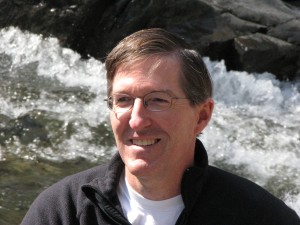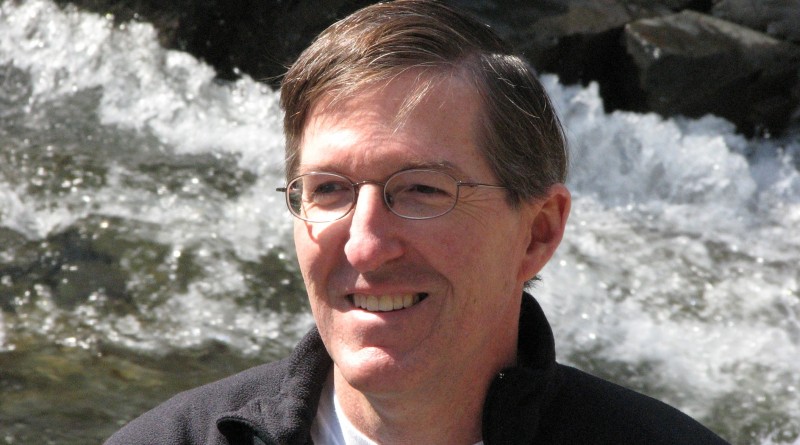Tony Shaw | Reader Athlete June 2011
 Tony Shaw
Tony Shaw
Age: 52
Residence: Williston
Family: Wife, Joann; two daughters, Katy and Emily
Occupation: Physical therapist at Fletcher Allen Health Care
Primary sport: White-water canoeing
VS: When did you start canoeing?
TS: I started canoeing at YMCA camps when I was 10 or 11. When I moved here for college, I fell in love with the mountains. I hiked all the 4,000-footers in New Hampshire and didn’t do much paddling. Then I took out my first consumer loan for a $300, 14-foot, aluminum Grumman canoe with a keel. It wasn’t a good choice for a New England white-water boat, where water is often so marginal, but it got a lot of use.
VS: When did you get your first real white-water boat?
TS: Around 1990, I got a Royalex tandem boat to paddle with my wife. Most marriages don’t survive tandem paddling, so we decided to keep the marriage and give up paddling the tandem together.
VS: So who did you paddle with?
TS: Actually, I had a kneeling board installed at midship and paddled it solo for years. The boat was 80 pounds, so it was a good workout. I even managed some challenging paddles like the Deerfield Dryway in Massachusetts in that boat. They do weekend releases throughout the summer. It’s a Class III or IV river, and it’s probably the toughest thing I’d ever paddled at that point in time. It was about then that I thought I should probably get a solo canoe, so I got a Mohawk Probe, which I paddled until my knees went through the bottom. I went down a 15-foot waterfall at Bartlett Falls (also known as Toaster) on the New Haven River. When my boat hit the pool at the bottom, it stopped but I kept going. The boat just ripped through underneath one of my knees.
VS: Has equipment improved since then?
TS: Oh, yes. These days, with lighter and better equipment, canoers do things we used to think weren’t possible. I remember when I would carry my boat on a section of the Upper Mad River that I would never consider not running now. These days I have a Mad River Outrage that’s only 12½ feet long. You can bounce off rocks all day long.
VS: How long is the white-water season?
TS: One year I paddled every month, but that’s unusual. The most difficult months for white water are January and February. You can always paddle in early December, and there’s almost always something running before the end of March. Mud season is ideal because the snow is melting. By late April, most of the snow is gone throughout Vermont, except at the highest elevations. By May, you need to find bigger rivers with bigger watersheds or go out after it rains.
VS: Have you taken any memorable white-water trips?
TS: The most memorable was going to the Grand Canyon in 2005. There are big rapids, and you get hammered, but there’s also an awful lot of easy floating with great scenery. It was a paddler’s dream. There are tougher rivers than the Colorado, but as multiday trips go, there aren’t too many better than that.
VS: Do you have a favorite body of water?
TS: The Vermont Paddlers Club has worked with American Whitewater trying to get some established releases and access to places that have been posted in the past. I paddled the Ausable Chasm as part of their flow study, and now it’s legal to canoe and kayak there. It has some serious white water, and it’s a stunning cleft in the Adirondacks. We’re also working with American Whitewater to get permission to use the Green River, which drains Green River Reservoir, and has some serious white water in the spring. A personal favorite is Joe’s Brook. It flows 10 miles out of Joe’s Pond to the Passumpsic and drops 1,000 feet in those 10 miles. There are steeper rivers, but 100 feet a mile for 10 miles is almost unheard of in New England.
VS: You’ve been involved in the Vermont Paddlers Club for years. Tell us about that.
TS: When the club was first founded, it was called the Northern Vermont Canoe Cruisers. It used to be primarily canoers, but that’s no longer the case. Before the Internet, we used to have a message phone where people could connect with others who had the yen to paddle. It’s easier now. This is my 15th year as their webmaster. I’ve archived all the old newsletters starting from 1975. That’s important because as our hunger for electricity grows, and the future of Vermont Yankee is in doubt, the pressure to develop rivers in Vermont is growing. The rivers that are steepest and have the most reliable flow appeal the most to hyrdro developers, but they are our favorites as well. Vermont has a doctrine called Existing Use, so having records showing that we use these rivers for recreational purposes is an important precedent.
VS: What is the allure of white-water canoeing?
TS: One of the real pleasures is going someplace new, paddling someplace you’ve never seen, and being transported through pristine primal forest by the water, where the moss of the forest creeps right down to the river’s edge.
VS: What other sports do you do?
TS: I love hiking and backcountry skiing. This year I did the Camels Hump Challenge, which was a lot of fun. My wife and I bought some trail crampons, which allow you to hike in the winter without snowshoes. That makes it easier to bring up a butt sled and slide down. I also enjoy road biking, fly-fishing and trail running. Trail running is a great way to keep in shape. It’s a shot of outdoor solitude.
—Phyl Newbeck

